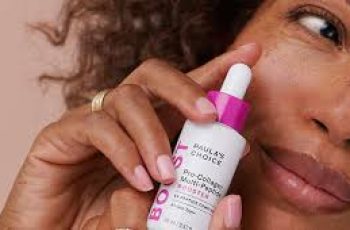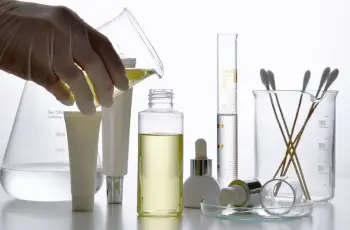
DNA Repair Enzymes in Skincare: What They Are and Why Dermatologists Recommend Them
If you’re serious about antiaging skincare, it’s time to get familiar with DNA repair enzymes.
These powerful ingredients work at a cellular level to help fix skin damage caused by UV rays, pollution, and other environmental stressors.
Incorporating DNA repair enzymes into your routine can support younger-looking, healthier skin while helping prevent future signs of aging.
This blog explores what DNA repair enzymes are, how they work, and which skincare products include them.
We’ll also cover who should use these ingredients, when to apply them, and how to build a DNA repair-friendly skincare routine for your skin type.
What Are DNA Repair Enzymes?
DNA repair enzymes are proteins that identify and correct damage in the DNA inside your skin cells. This damage often results from UV exposure, free radicals, toxins, and environmental stress.
These enzymes are naturally found in your body, but their levels and activity decline with age and environmental damage. That’s why applying them topically can be so effective.
Many of these enzymes are derived from marine sources, plants, or bacteria and are added to serums, creams, and sunscreens to help reduce DNA mutations and slow visible aging.
How Does DNA Repair Work in Skin?
DNA repair happens through a complex biological process involving four main steps:
1. Detection:
Enzymes like DNA glycosylases identify DNA damage or mutations caused by UV light or oxidative stress.
2. Excision:
Enzymes such as endonucleases cut and remove the damaged DNA section, similar to removing a broken link from a chain.
3. Replacement:
DNA polymerases create a new DNA strand to replace the removed segment with accurate genetic information.
4. Ligation:
DNA ligases “glue” the corrected DNA strand back into place, restoring normal function.
Together, these steps maintain the skin’s health and reduce long-term damage that leads to aging, discoloration, and in some cases, skin cancer.
Who Should Use DNA Repair Enzymes in Skincare?
DNA repair enzymes are beneficial for almost all skin types, but they are especially useful for:
People with sun-damaged or prematurely aging skin
Those with sensitive or reactive skin prone to environmental stress
Individuals with hyperpigmentation or uneven skin tone
Anyone regularly exposed to UV light or pollution
Patients recovering from aesthetic treatments like lasers or peels
If your goal is to slow signs of aging, support skin regeneration, and reduce DNA damage, these enzymes may be ideal for your routine.
Best Skincare Products With DNA Repair Enzymes
Cleansers
Cleansers may contain DNA repair enzymes, but since they rinse off quickly, they don’t deliver significant repair benefits. Use them to prep the skin for leave-on products.
Serums
Serums are ideal for delivering DNA repair enzymes because they’re applied directly to clean skin and have high absorption.
💡 Pro Tip: Apply serums after cleansing with warm water to improve blood flow and enhance penetration. Follow with a moisturizer to lock in the actives.
Recommended:
Photozyme Youth Recovery DNA Repair Serum – A top pick by dermatologists, this serum supports cellular recovery and improves resilience to environmental damage.
Moisturizers
Moisturizers with DNA repair enzymes offer hydration and repair. While their penetration is less effective than serums, they work well when layered over serums.
For oily skin:
Rationale #5 The Gel-Crème
Micrococcus Lysate – Repairs UV-damaged DNA
Bifida Ferment Lysate – Strengthens skin barrier
Pseudoalteromonas Extract – Promotes skin regeneration
Hydrolyzed DNA – Supports skin repair
Acetyl Hexapeptide-51 Amide – Boosts repair energy
Arabidopsis Thaliana Extract – Plant-derived DNA support
For dry skin:
Rationale #6 The Night Crème
Includes all of the above and Hydrolyzed RNA for deeper skin regeneration
Sunscreens
Sunscreens with DNA repair enzymes offer two levels of protection: they block UV rays and also repair existing DNA damage.
Look for:
Photolyase, Micrococcus Lysate, T4 Endonuclease V
🌙 Nighttime is when your skin does most of its repair work, so don’t rely on DNA repair from sunscreen alone. Use serums and night creams to maximize results.
Eye Creams
DNA repair eye creams target the delicate under-eye area, helping to reduce signs of aging like crow’s feet, puffiness, and dark circles.
Rationale #6 The Eye Crème includes:
Arabidopsis Thaliana Extract
Micrococcus Lysate
These ingredients repair UV damage and rejuvenate the thin skin around the eyes.
How to Use DNA Repair Enzymes in Your Skincare Routine
DNA repair enzymes work best at night, but can also be used in the morning for added protection. Here’s a step-by-step evening skincare routine:
Step 1: Cleanser
Start with a gentle cleanser to remove dirt and makeup. Choose one that suits your skin type.
Step 2: Eye Cream
Apply eye cream if you’re targeting signs of aging around the eyes. You can also use your DNA repair serum here.
Step 3: DNA Repair Enzyme Serum
Apply serum to clean, slightly damp skin. Let it absorb for a minute or two. Try the Photozyme Vitamin C+E Ferulic Serum for added antioxidant benefits.
Step 4: Moisturizer
Seal in the serum with a moisturizer that supports your skin type and repair goals.
Step 5: Retinoids (Optional)
Retinoids are a great complement to DNA repair enzymes. Follow the product instructions or take our quiz to know when and how to combine them.
Ingredients That Boost DNA Repair Enzyme Effectiveness
Pairing DNA repair enzymes with other energy-boosting ingredients improves their results:
Niacinamide – Increases cellular energy and reduces inflammation
Ubiquinone (CoQ10) – Powerful antioxidant that supports repair
NAD+ precursors – Essential for DNA repair processes and energy metabolism
DNA Repair Enzymes vs. Other Antiaging Ingredients
Not sure whether DNA enzymes are right for you? Compare them with other popular antiaging actives:
Ingredient Primary Benefit
DNA Repair Enzymes Fix DNA damage from UV and pollution
Retinoids Boost collagen, reduce wrinkles
Vitamin C (Ascorbic Acid) Brightens, firms, blocks melanin
Peptides Firm skin, signal collagen production
Growth Factors Repair tissue, restore elasticity
Glycosaminoglycans Hydrate and plump the skin
Our AI-based skin type quiz helps you build a routine that mixes and matches the best of these for your unique needs.
Types of DNA Repair Enzymes in Skincare
Here are the most common enzymes, their sources, and how they work:
1. Photolyase
INCI Name: Photolyase, Source: Marine plankton, How it works: Uses visible light to reverse UV-induced DNA damage
Best in: Sunscreens and serums
2. Micrococcus Lysate
INCI Name: Micrococcus Lysate
Source: Micrococcus luteus bacteria
Action: Cuts out damaged DNA segments for repair
Best in: Night creams, serums
3. T4 Endonuclease V
Source: Bacteriophage-infected E. coli
Action: Recognizes and cuts UV-damaged DNA
Often encapsulated for skin delivery
4. OGG1 (8-Oxoguanine Glycosylase)
Source: Arabidopsis thaliana
Action: Repairs oxidative damage (8-oxoguanine lesions)
Listed as: Arabidopsis extract
5. Hydrolyzed DNA and RNA
Provide nucleotide fragments that support skin regeneration
Found in creams and barrier repair formulas
6. Acetyl Hexapeptide-51 Amide
Action: Helps protect DNA and promote repair
Also enhances skin resilience and firmness
Final Thoughts
DNA repair enzymes are a cutting-edge addition to skincare that go beyond hydration and surface-level treatment. They help reverse existing cellular damage and strengthen your skin’s defenses over time.
Whether you’re managing sun damage, fighting early signs of aging, or simply want to preserve skin health, DNA repair enzymes offer proven results when used properly.
Ready to Try DNA Repair Skincare?
Let us guide you with a custom skincare routine designed for your Baumann Skin Type.
Our AI-powered quiz will match you with the right products—including those with DNA repair enzymes—so you get faster, more visible results.
🧬 Take the quiz and build your custom skincare regimen today!


